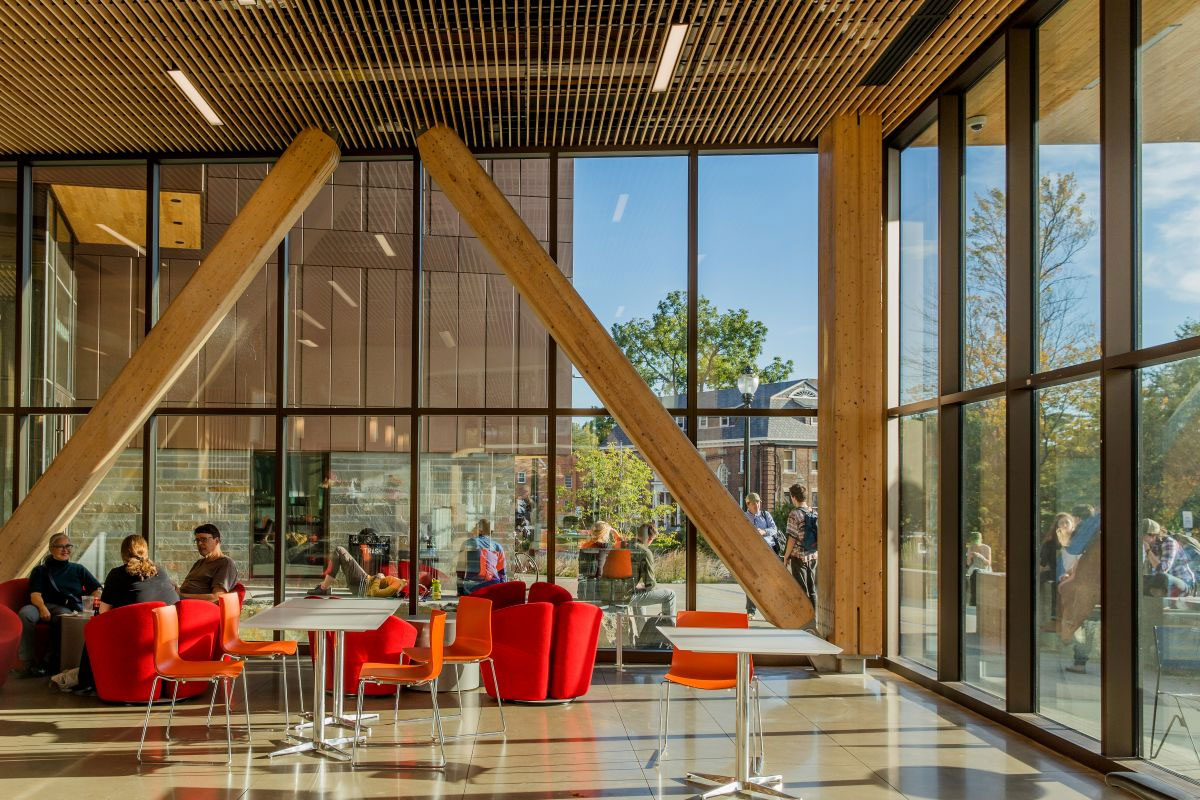Vitro Advances Educational Content on Glass and Embodied Carbon and Provides Recommendations on Designing Greener Projects
PITTSBURGH, October 15, 2025 – Sustainable design has evolved from an optional consideration into the standard within contemporary architecture and construction. Design professionals are now expected not only to fulfill established sustainability requirements but to actively surpass them, contributing to a more environmentally conscious built environment.
A primary strategy for achieving this involves selecting low-carbon products and materials, with advanced glass solutions playing a pivotal and transformative role in realizing this critical vision. Navigating carbon assessments and requirements starts with understanding how to measure it, reduce it in glass manufacturing and adapt to new low-carbon building codes and standards.
To assist with this, Vitro has developed a Glass Education Center article and white paper about glass and embodied carbon, outlining recommendations and exploring how glass can drive the future of greener, more sustainable projects. Topics covered include:
- Operational vs. Embodied Carbon
- Embodied Carbon in Glass
- How Low-e Coatings Can Reduce Energy Use
- Environmental Product Declarations (EPDs)
- Code Development

The John Olver Design Building is certified LEED® Gold, and features Solarban® low-e coatings by Vitro.
(Ngoc X Doan Photography)
Embodied carbon accounts for roughly one-third of a building's total carbon footprint, making its reduction a priority for immediate climate benefits. Unlike operational carbon, which decreases gradually over a building's lifespan, cutting embodied carbon delivers instant impact. On the operational side, integrating low-e and solar control glazing can drastically reduce energy usage for lighting and HVAC systems. This not only boosts energy efficiency but also lowers energy costs and significantly cuts carbon emissions.
Innovation is accelerating in the glass and building industries. As sustainable design becomes more critical, expect continued advancements in technologies, programs, regulations, and building codes that support this goal. It is vital for architects, building owners, and other stakeholders to stay informed about these new developments.
For more information about these and other Vitro Architectural Glass products, visit vitroglazings.com or call 1-855-VTRO-GLS (887-6457).
About Vitro Architectural Glass
Vitro Architectural Glass is the largest glass producer in the Western Hemisphere, manufacturing a range of industry-leading, energy-efficient, high-performance products such as Solarban®, Sungate® and Starphire Ultra-Clear® glasses. Committed to continually raising the industry standard for sustainability, Vitro was the first U.S. glass manufacturer to have its complete collection of architectural glass products earn Cradle to Cradle Certified® status and the first North American manufacturer to publish third-party verified Environmental Product Declarations (EPDs) for flat glass and processed glass products. Additionally, as of April 2024, all Vitro architectural glass products meet the Top 20% Low Embodied Carbon (LEC) material Global Warming Potential (GWP) threshold the U.S. General Services Administration (GSA) established pursuant to the Inflation Reduction Act of 2022 and related guidance from the U.S. Environmental Protection Agency. Vitro operates seven glass production facilities across North America, four residential glass fabrication plants in Canada and one of the world’s largest glass research and development facilities in Pittsburgh, Pennsylvania. For more information, please visit VitroGlazings.com.

Media Contact:
Robert J. Struble
Vitro Architectural Glass
412-820-8138
rstruble@vitro.com
vitroglazings.com
